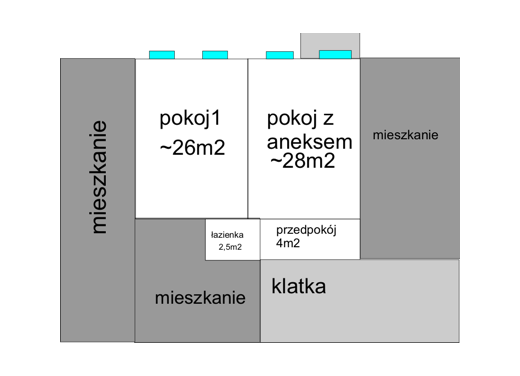Thanks for the post, but ... it's not quite like that - I have to complete.
- I will rather buy 2 pcs of 3 kW stoves - that is, a total of 6 kW for heating, because the differences in the prices of used stoves are not large, so I will save a lot by buying 2 stoves instead of 4. Only that THEORETICALLY it will not be enough (counting 140 w / m2)
- I do not have a temperature of 23 degrees in my plan. The goal is to maintain the temperature of 18 degrees during the day and 16 degrees at night.
Quote: to be installed is:
8kW (storage heaters), 2kW (radiator in the bathroom), 2kW (boiler), 8kW (electric cooker), 2kW (kettle), 2kW (washing machine), which is a total of 2 times more because about 24kW, not including lighting and other small receipts.
You count as if everything was to be turned on at once, and yet it is not - it would be money wasted for unnecessary allocation.
From my perspective, it looks like this:
6 kw - heaters - 2 stoves, 3 kw each
the bathroom is about 2.5 m2 - a 500 watt radiator is enough
boiler - 1.5 kw
Electric kitchen - 8 kw? Whenever you cook, you turn on 4 burners to the highest level of heating and the oven to full?

They advised me to connect the stove in three-phase with a 5x4mm2 cable. Fortunately, I found a reasonable electrician - the cooker is connected to a single-phase cable with a 2.5 mm cable on a separate circuit (according to the formula, the permissible load for this cross-section cable is 5.8 kW.
The kitchen has a 5.8 kw + 2 kw oven. So I could fire all the burners full or 2-3 burners full and the oven.
I HAVE NOT HAPPENED to use more than 2 burners at once, so I don't even use half of the load capacity. Let's count 3 sq.
That's 6 + 1.5 + 0.5 + 3 = some 11th quarters. The periphery will not exceed 1Q.
The limit would be exceeded by a washing machine and kettle. However, it does not happen to me to turn on the washing machine in the night tariff (I respect my neighbors).
Quote: And do not say that you will live during the day and warm at night, because again I know from practice that for those with the "night tariff" the most important are the 2h between 1pm and 3pm, because that's when they heat, cook, wash, vacuum, etc. do everything, because later it is more expensive in the daily tariff than in the single tariff.
Let's say that only on the weekend we are able to use the 1PM - 3PM tariff for this type of thing. At weekends, we also eat lunch as during the week - rather around 6:00 p.m., and often, not always at home.
Quote: If you take into account the tiled stove and it is true that the flat is warm (here I would be afraid of this height of over 3m, but it can be lowered), in my opinion the solution is simple.
I know that height is a problem and I plan to do something about it.
Simple solution? ie, leave the tiled stove and buy only one storage stove?
For now, I heat the room depending on the need, and the room: with a convector, a portable ceramics or a halogen heater, but generally the apartment is warm and there are no problems with the temperature.
However, I would prefer a dynamic stove to a tiled stove to shift the heat distribution to the day, because the vision of freezing during the day and hot at night is very unpleasant.
Added after 14 [minutes]: I would like to add that I am not delusing myself - we are prepared for monthly bills of PLN 400 in winter, because what to do? It will be fine if we can make it into this amount. If there will be 500, there will be no tragedy either. 3 kw furnaces running on full speed are about PLN 630, i.e. a total of 700 per month in the worst case. But will they really have to go full-blown?



